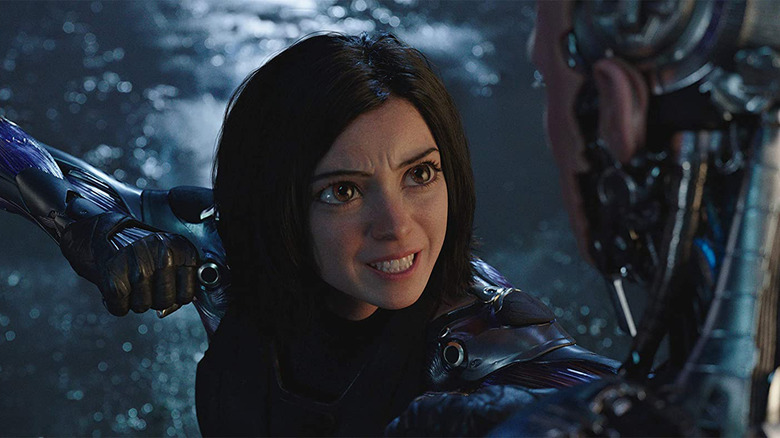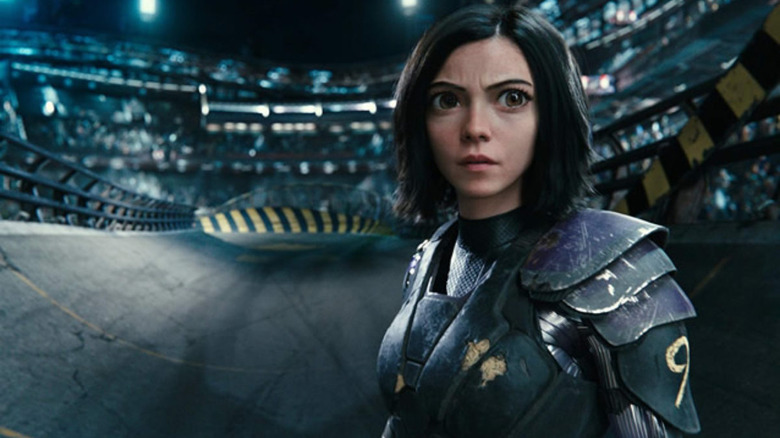Alita: Battle Angel Didn't Use Much Green Screen, Despite Having A CGI Star
"Alita: Battle Angel" may not be everyone's preferred cup of tea, but there is a reason why the hashtag #AlitaArmy exists and is still thriving on Twitter long after the film's release in 2019. Based on the manga "Battle Angel Alita," the film follows Alita (Rosa Salazar), a reborn cyborg with a mysterious origin who has to adapt to an unfamiliar and exceedingly cruel world. The critical consensus on the film was not overwhelmingly positive, but everyone can pretty much agree on one thing — the visual effects in "Battle Angel" were fantastic, if not revolutionary. And the best part? It was not all digital, either.
Not unlike what the modern "Plant of the Apes" trilogy pulled off, "Alita: Battle Angel" combined practical effects with motion-captured, digital characters. Although Alita herself was completely CGI, many of the surrounding characters were not. In fact, several key sequences in the film took place in real-life sets, featuring tangible props and extras. The Motorball race sequence, for instance, featured a plethora of mostly CG characters, but it took more than just computers to bring it to life. In most cases, using a green screen was not the modus operandi for the big-budget tentpole.
'We had extras, real sets, props'
In a 2019 interview with Rolling Stone, "Alita: Battle Angel" director Robert Rodriguez discussed bringing the film's Motorball sequences life, revealing that practical sets were used despite the prevelance of CGI characters. It was an extensive, game-changing endeavor:
"We had extras, real sets, props. Then Weta essentially had to make new tools to add CGI characters and make it look like it was a NASCAR race or a sporting event. They had to fake a camera-lens flare, which they'd never done before! It was: We can't have green screens, we gotta have real sets, real props, real textures. And she's going to have to fit alongside everything. So they were going to have to start from scratch with technology in some cases."
A number of things could be said about the execution of the story, but "Alita: Battle Angel" is damn near flawless when it comes to the visual effects. In a cinematic landscape that usually defaults to using green screens and strictly computer-generated imagery, it was clearly worth combining practical elements in a film whose CG protagonist had to interact with a real environment and people. The technological achievements of "Battle Angel" were also a natural progression of another groundbreaking film.
James Cameron, a producer on "Alita: Battle Angel," first set the stage for the manga-based film in 2009 with "Avatar." It's no secret that the billion-dollar franchise attained much of its praise through its hyperrealistic visual effects, but it also allowed projects previously deemed "un-filmable" to come to life in a faithful fashion. No matter how one may feel about "Alita," it's difficult to not appreciate the work that was put into creating a wholly unique world through some good old-fashioned practical effects and innovative digital technology.

